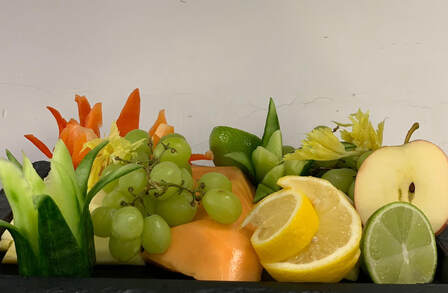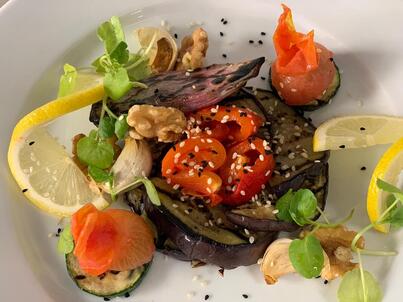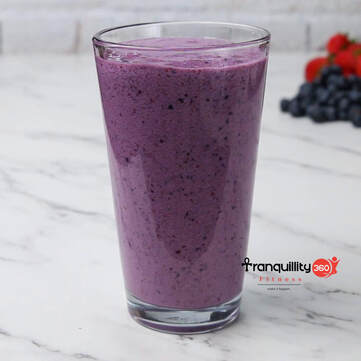 Eating too much sugar can contribute to people having too many calories, which can lead to weight gain. Being overweight increases your risk of health problems such as heart disease, some cancers and type 2 diabetes. Cutting down your consumption of sugar can help protect your health in the long term. Sugar-heavy diets have been linked to health conditions, including obesity, diabetes, and heart disease. Most people in the world today eat far too much sugar. A W.H.O health and diet survey from 2015–2020 found that the average person eats about 17 teaspoons of sugar a day. The Dietary Guidelines recommend to eating no more than the equivalent of 12 teaspoons of sugar a day, and the Numerous Heart Association suggests no more than the equivalent of six teaspoons per day. To cut down on your sugar consumption, your first goal should be to focus on incorporating more whole, unprocessed foods into your daily die, try to get most of your daily in takes from natural sugar such as fruits or raw molasses. Eating more of these foods can crowd out processed sources of added sugars in your diet. The second goal should be to become a label reader. Before you choose a product, scan the label to see if it has added sugars. Try to find products that are low in added sugars whenever possible. There can be a lot of sugar hiding in foods that don't even taste particularly sweet. This includes salad dressings, marinades, and condiments, such as barbeque sauce and ketchup. Other seemingly healthy foods that may be high in sugar are granola bars, yogurt, and even salsa. Reducing the amount of sugar, you eat can be difficult. Some experts recommend a gradual approach to make the process easier.
0 Comments
 Plant-based diets have taken root in many cultures around the world in recent years, mostly thanks to the growing realisation about the health benefits of this eating pattern. But contrary to what some people think, plant-based doesn’t necessarily mean you must forego all animal products. Rather, you might just eat meat or dairy products less frequently, or in smaller portions. To replace those lost calories, you should eat more beans and legumes, vegetables, whole grains, and fruits. These mostly low-fat, nutrient-rich foods have been linked to improvements in many health-related issues, including high blood pressure, diabetes, and heart disease. A plant-forward diet also can help reduce your food budget. And there’s yet another reason to feel good about this eating pattern: it helps preserve our planet’s health. A diet that contains only small amounts of animal foods requires a fraction of resources such as water, energy, and land to cultivate, and it generates fewer greenhouse gases. What’s more, by eating unprocessed or minimally processed foods, you avoid the additional energy and packaging that go into the production of processed foods. “Following a plant-based diet may be an important way to reduce your carbon footprint. Research suggests that diets high in red meat account for five times the emissions of plant-based diets. Plant Based Diet And Fitness The stereotype of the weak, skinny vegan has become so universal that most people would have a hard time believing any person of significant size or strength didn’t eat meat or other animal products. This is because we’ve been conditioned to believe that you need to eat lots of animal protein to build muscle and strength, and that protein only comes from animal foods. Of course, only one of those two beliefs are true, as anyone who has ever seen a (herbivorous) silverback gorilla can easily deduce. Most people, however, seem to think humans are more like lions, requiring meat or some form of animal protein at every meal to get big and strong. There are many reasons for how this myth became so ingrained in the popular culture, but the reality is that from the hippie culture of the 60s until recently, a lot of those who followed a plant-based diet were skinny. This is partly because, for several decades, most people who chose meat/animal-free diets did so solely for ethical, environmental or health reasons, and didn’t really care about having big muscles. Those who did care often lacked the basic nutritional understanding necessary to build muscle and strength eating plants. What About Protein The idea that you can’t get enough protein from plants, and/or that sources of plant protein are “inferior”, has no basis in science. What is backed up by scientific research is how much protein (animal or plant) is required to increase and/or maximize size and strength. While the majority of people only need to eat about 0.8 grams of protein per kilogram of bodyweight (g/kg) per day — or 0.36 grams per pound (g/lb) — to maintain good health, research focused on gaining muscle and strength has consistently shown that considerably more protein is required. Current research suggests that most athletes require between 1.2-2.0 g/kg , with endurance athletes on the lower end of the spectrum (, and bodybuilders and strength athletes toward the upper end (≥1.6). If your goal is to increase muscle mass and strength as quickly as possible, like professional bodybuilders or powerlifters aim to do, research shows that as much as 2.2 g/kg can be effective. Vegan Chocolate Brownie Ingredients
Method
Roasted Butternut Squash and Israeli Cuscus Ingredients
 One question people always asked me, whenever time am going out to eat, what do you eat, being that you are a vegan and healthy/gym junkie. The thing is that a lot of people are ignorant when it comes to diet and eating healthy, most people thinks diet is starving themself or just eat some lettuce. One can still go out and have healthy meals, but they are a few tricks to it. The best bet for meeting your health goals is to cook your own meals at home, where you can control the ingredients and portion sizes. However, we all enjoy eating out from time to time. Just keep in mind that restaurant meals—in particular, fast-food meals—are linked with higher intakes of calories, sugar, saturated fat, and sodium, and lower intakes of healthful foods, such as fruits, vegetables, and whole grains. One of the biggest problems you'll face when you dine out is sheer portion size, which has increased dramatically over the years. Those bigger portions translate into more calories, sodium, sugar, and saturated fat. Fortunately, the dining scene has improved. EU laws now requires chain restaurants to provide consumers with clear and consistent nutrition information on menus, menu boards, and in writing, which can help you make healthier choices. And more and more restaurants are meeting consumers' desires for healthier fare by providing smaller portions, more fruits and vegetables on the menu, more vegetarian options, and lighter preparation styles. Here are some of my tips for dining out healthfully: · Patronize restaurants where good choices, whole grains, legumes, fruits, and vegetables—abound. · Check out the restaurant website in advance in order to decide what you'll order, instead of making impulse decisions. Many restaurants post their menus online, enabling you to find the healthiest entrees. Some even list nutritional information on menu items. Beware of those with high calorie, fat, sugar, and sodium levels. · Skip pan-fried or deep-fried foods. Instead, look for foods prepared with healthful techniques, such as baking, grilling, poaching, or roasting. · Avoid dishes prepared with gravy and heavy sauces. Or ask the waiter to use half the sauce or to serve the sauce on the side so you can decide how much of it to use. Because gravy is often made with fatty pan drippings from meat, it's relatively high in saturated fat. Many sauces are made with butter and cream, which are also high in saturated fat. · Resize your portions: split a meal with a friend, order small plates or side dishes, or take half of it home for lunch the next day. Take advantage of the "small plates" trend, in which you and your dining companions share small servings and avoid large portions of single dishes. · Get extra vegetables. Many restaurant entrees don't come with a generous serving of vegetables. But you can easily remedy that by asking for more vegetables, ordering vegetables from the side dish selection, or substituting vegetables or a salad for a less, healthful side dish, such as fries. · Lighten up dessert. Skip the indulgent, rich desserts, such as ice cream, cakes, and pastries (some can contain more than 1,000 calories) and go for simple treats, such as berries and peaches. If you want a sweet dessert, share it with others at your table. You'll get the full taste, but just a fraction of the calories, sugar, and unhealthy fats. · Watch those beverages. Sweetened drinks (often refilled during the meal) and alcoholic beverages can add hundreds of calories to your meal. Opt for sparkling water, plain tea, or coffee. o edit.  The winter is slowly but surely making its way on us which means for most people within the fitness industry its bulking season. That means upping your calorie intake to make it to that all-important calorie surplus. Having to eat a load more food sounds great in theory, but for a lot of people that means things can get pricey. I want to share with you 3 simple shake recipe that is, budget-friendly bulking shakes that won’t only provide a delicious boost of calories alongside high-quality protein and carbs but won’t break the bank, in fact they can help you save money and stimulate muscle growth at the same time. These recipes are quick and simple and great to have on the go. Peanut Butter Banana:
Place all ingredients in the blenders and blitz Chocolate and Coconut Kick
Place all ingredients in the blenders and blitz Hemp and Berry Blast
|
AuthorsThis blog is updated by Tranquillity 360 fitness personal trainers, as well as other guest bloggers. Archives
July 2021
Categories |

 RSS Feed
RSS Feed